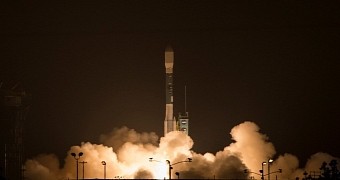This past weekend, scientists with NASA successfully launched a brand new satellite. The probe, dubbed the Soil Moisture Active Passive (SMAP) observatory, managed to place itself in Earth's orbit and is now circling our planet.
NASA researchers say that, while in Earth's orbit, the satellite will collect data concerning soil moisture all across the globe. This data will help better predict droughts or floods, and in doing so, it will make it easier to protect people and property against such natural disasters.
The liftoff went on without a hitch
In a report detailing this latest mission, scientists with NASA detail that the Soil Moisture Active Passive observatory launched on Saturday, at 6:22 a.m. PST (9:22 a.m. EST), from the Vandenberg Air Force Base in California, US.
The satellite left Earth nestled atop a United Launch Alliance Delta II rocket that served to place it into an initial 411-by 425-mile (661-by 685-kilometer) orbit. Both the liftoff and the moment the satellite broke free from the rocket were caught on camera. The footage is available below.
Researchers say that, shortly after it separated from the United Launch Alliance Delta II rocket, the Soil Moisture Active Passive observatory successfully deployed its solar array and began communicating with ground controllers. The satellite is said to be in top shape and ready to get to work.
What the satellite will be up to while in Earth's orbit
As mentioned, NASA's Soil Moisture Active Passive observatory is to keep tabs on soil moisture all across the globe and put together maps showing just how much water lands all across the world hold.
To do so, the probe will peer through clouds and Earth's vegetation cover. The goal is to determine the moisture of the top 2 inches (5 centimeters) of soil. Scientists expect that, using data provided by this satellite, they will have an easier time predicting droughts and floods.
“The mission will help improve climate and weather forecasts and allow scientists to monitor droughts and better predict flooding caused by severe rainfall or snowmelt – information that can save lives and property,” scientists with NASA explain.
“In addition, since plant growth depends on the amount of water in the soil, SMAP data will allow nations to better forecast crop yields and assist in global famine early-warning systems,” they add.
For several weeks to come, the Soil Moisture Active Passive observatory will remain in the initial orbit the United Launch Alliance Delta II rocket placed it in. However, it will at one point be guided towards its final 426-mile (685-kilometer) orbit.
When this happens, the satellite will orbit our planet from pole to pole once every 98.5 minutes and will get to work mapping soil moisture with a resolution of about 5.6 miles (9 kilometers). Should all go well, the probe will provide its first set of data concerning global soil moisture in about 9 months' time.

 14 DAY TRIAL //
14 DAY TRIAL // 
